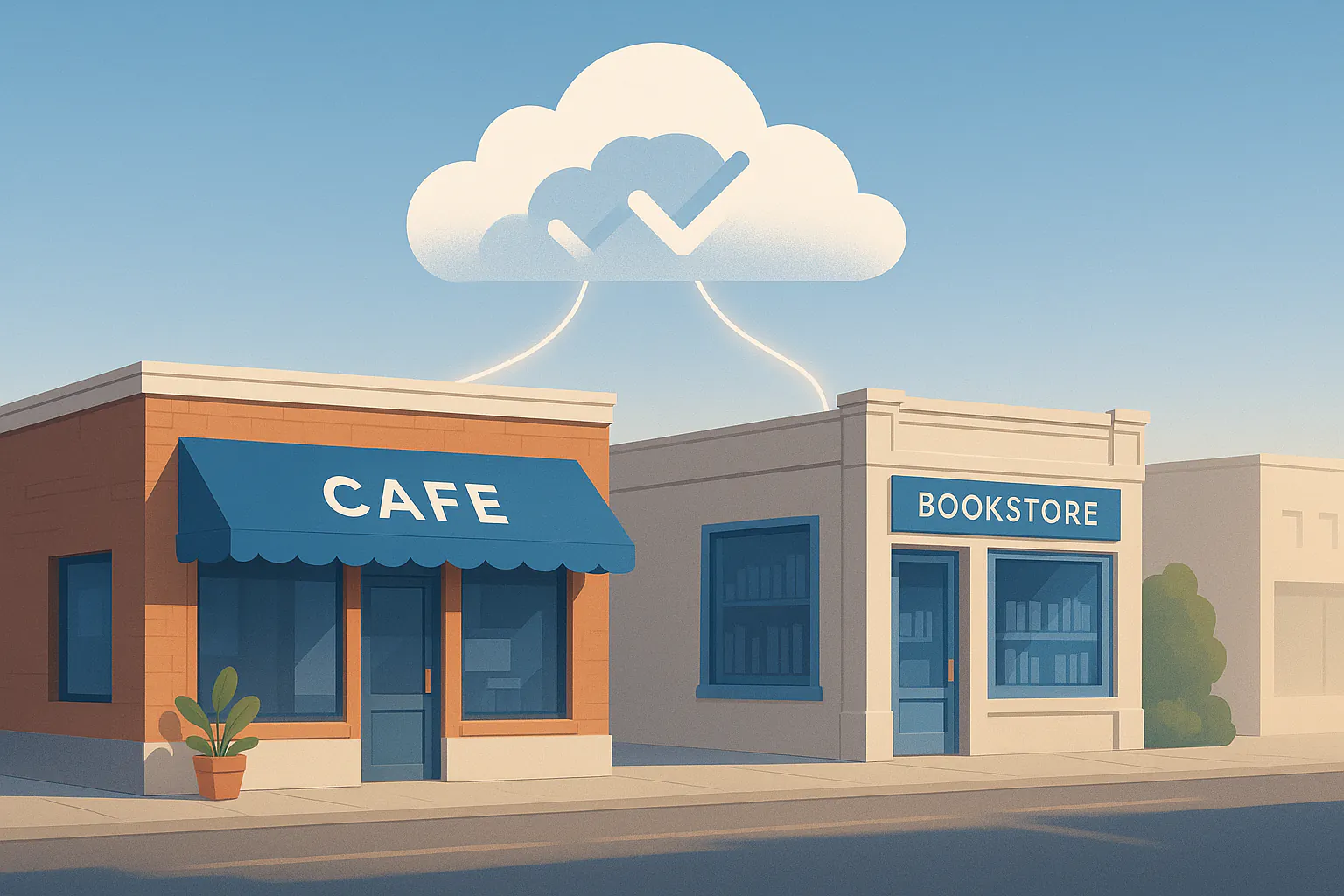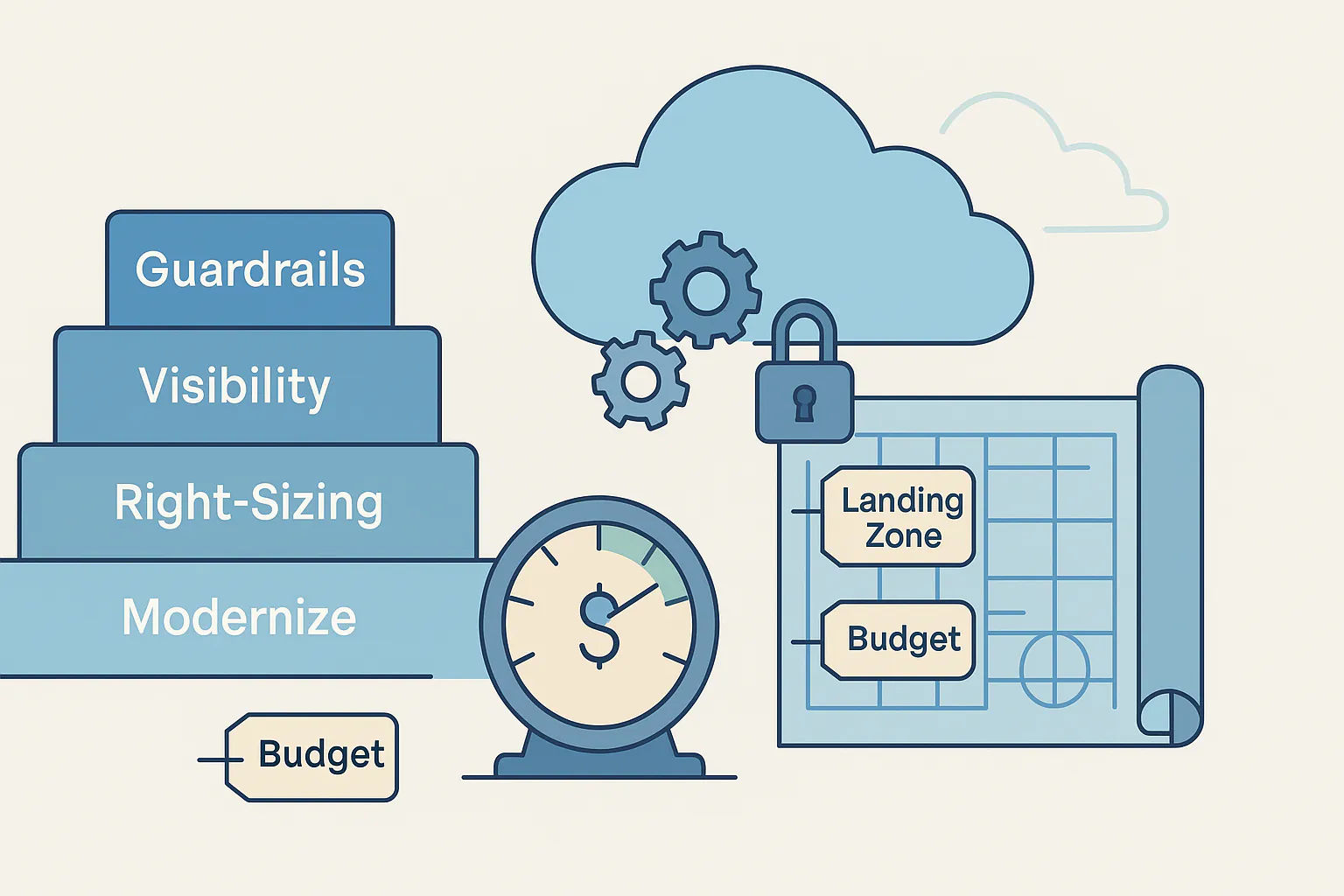5 Strategic Decisions for End of Life Software
Key Takeaways
- Unsupported software increases security and compliance risk. Treat EOL systems as high-priority to remediate.
- Your decision tree is simple: upgrade, replace, replatform/refactor, or retire—picked by business value, risk, and cost.
- Prevent the next crunch with a living software inventory, lifecycle policies, and a 12–18 month EOL roadmap; YTG can help plan and execute it.

You are here because a critical system is nearing the end of its supported life and doing nothing is the most expensive option in disguise. This guide shows the five decisions that change outcomes: where to aim, how to modernize, where to land, how to cut over, and how to stay current. You will leave with checklists, decision matrices, and a simple inventory template you can copy into your next working session.
For context: Yocum Technology Group (YTG) builds and modernizes custom software, runs agile delivery, and supports cloud moves with Azure, CI/CD, and post-launch care. Those capabilities inform the playbook below.
What “End of Life Software” Actually Means
End of Life (EOL) software is a product version the vendor no longer updates or supports. No fixes. No security patches. No new features. It will still run tomorrow, but every day you run it, your risk and maintenance costs creep up. The right response is not panic, it is posture: set a clear target state, choose the right modernization path, and plan the move so the business keeps running.
Quick diagnostic. If two or more of these are true, treat the system as high-risk:
- No vendor updates for 12 months or more
- Can’t pass a routine security scan without waivers
- Only one or two people know how it works
- Integrations break when adjacent systems update
- The last deploy required heroics or a weekend freeze
The Five High-Leverage Decisions
These are the decisions with outsized impact on cost, risk, and timeline. Make them early, and your work downstream gets far easier.
1) Set the Target State and Risk Boundaries
What this decides: Where the business needs to land and what risks are unacceptable on the way there.
Use this to anchor choices:
- Business goals: What must improve? Time to market, availability, audit posture, or all three.
- Risk tolerance: What downtime window is acceptable, if any? What data loss, if any, is acceptable during cutover?
- Regulatory and contractual guardrails: Which compliance requirements are binding? Which service-level agreements need to be maintained?
- Ownership: Who will own the system and budget after the move?
Outputs you should document:
- A one-page target state (platform, ownership, uptime/SLA, data boundaries)
- A simple risk score (1–5) for security, people, and integration risk
- A budget range for the next 12–24 months covering licenses, data migration, and team time
This decision shapes every other choice. It also sets the baseline for whether you carry technical debt forward or pay it down.
2) Choose the Modernization Strategy Per Application
There is no single “best” path. Choose per system, guided by fitness for purpose and time pressure. YTG’s modernization work commonly uses these approaches—often mixing them across a portfolio.
Rehost (“lift and shift”). Move the application to cloud infrastructure with minimal changes. Fast relief for end-of-support risk.
- Replatform. Change the runtime or database to managed equivalents while keeping core code. Usually the “80/20” step that reduces ops work and sets up future refactoring.
- Refactor. Improve code structure, extract services, and harden critical paths. Targets performance, maintainability, and security.
- Rebuild. When the product no longer fits, rebuild with modern frameworks and an API-first design. YTG builds net-new systems and modernizes existing ones under an agile model.
Strategy selector (fast read):
- Hard deadline + low change tolerance → Rehost or Replatform
- Performance and scaling pain → Replatform or Refactor
- Frequent change requests + brittle monolith → Refactor modules or Rebuild core flows
- Vendor lock-in cost + poor roadmap → Rebuild with modular architecture
3) Pick the Landing Zone and Architecture
Your “landing zone” is the environment, guardrails, and baseline services where applications live after the move. On Azure, this includes identity, networking, monitoring, backups, and cost controls. YTG designs and migrates to Azure, implements CI/CD, and applies DevOps practices so changes move through environments safely.
Architectural options to weigh:
- Keep the monolith, but make it deployable and observable
- Modularize the monolith, extracting high-change components first
- Adopt microservices only where autonomy and scaling justify it
- Use containerization with Docker and Kubernetes when portability and scale matter; otherwise consider managed PaaS to reduce ops work
Decision cues:
- Release pain and long test cycles often signal the need to modularize
- High variability in load suggests autoscaling on PaaS or containers
- Security and audit pressure argue for centralized identity and secrets
4) Define the Cutover Plan, Data Migration, and Downtime Budget
End-of-life projects fail when teams treat cutover as an afterthought. Treat it as its own mini-project.
Plan on three rails:
- Data migration. Decide on full load vs. incremental sync, validation steps, and rehearsal timing.
- Cutover mechanics. Blue-green, canary, or rolling switch. Document the rollback plan.
- Downtime budget. If the business has a true zero-downtime constraint, prove it with a dress rehearsal.
YTG reduces risk with phased moves, automated testing, and deployment pipelines using Azure DevOps or GitHub Actions. That approach keeps critical services online while you transition.
Cutover checklist:
- T-7 days: final full rehearsal with production-like data
- T-24 hours: freeze noncritical changes; enable extra logging
- T-hour: checkpoint backups; execute switch; monitor key health checks
- T+24 hours: verify financial and compliance reports; close the change
5) Lock In a Support and Upgrade Policy
EOL pressure returns unless you change the maintenance rhythm. Define a policy that your team and vendors can actually sustain.
For .NET teams, Microsoft moved STS support windows from 18 to 24 months, while LTS remains three years. That matters for planning: you can adopt newer features on an STS release with more breathing room, and you can align upgrade cadences with business cycles. YTG has public guidance on this shift and helps teams plan version roadmaps.
Write this down:
- Supported language/runtime versions by environment
- Upgrade cadence targets (for example, “every second STS,” or “LTS only”)
- Dependency rules (no libraries older than N versions; security updates inside two weeks)
- End-of-support triggers (for example, start planning 9 months before EOS)
Quick Triage: A 30-Minute Inventory Template
You do not need a month to start. Book a 30-minute working session and capture:
- Systems list: Name, owner, users, upstream/downstream integrations
- Version facts: App version, runtime, database, end of support date if known
- Risk markers: Security waivers, single-maintainer risk, failed audits, brittle releases
- Change velocity: How often requests arrive; what’s blocked today
- Business impact: Revenue or safety impact if the system fails
Scoring rubric (fast):
- Security risk (1–5): Patches available? Vulnerability backlog?
- Operational risk (1–5): Deploy reliability, on-call noise, recovery drills
- Business criticality (1–5): SLA, revenue impact, regulatory exposure
Start modernizing the top 10–20% by risk and impact, not by who shouts loudest.
Modernization Strategy Decision Matrix
Orienting note. Use this matrix to get to a first-pass choice for each app. Then validate with a spike or prototype.
- Rehost
- When: hard deadline, limited change tolerance
- Benefits: fastest risk reduction for end of support
- Trade-offs: carries technical debt forward
- Replatform
- When: you need managed services and easier scaling
- Benefits: reduces ops overhead; prepares for future refactor
- Trade-offs: some code and config change
- Refactor
- When: code health and performance are the problem
- Benefits: better maintainability, safer releases
- Trade-offs: more effort; requires strong tests
- Rebuild
- When: product-market fit or tech stack no longer match needs
- Benefits: clean slate with modern patterns and CI/CD from day one
- Trade-offs: longest runway; new change management
YTG performs all four patterns, using agile delivery and DevOps practices with post-launch support.
Architecture Pragmatism: Monolith, Modular, or Services?
You do not earn bonus points for microservices. Choose the simplest structure that clears your constraints.
- Keep a modular monolith if the team is small and releases can be fast with good tests.
- Extract one high-change module into a service to relieve hotspots.
- Use microservices when separate scaling, team autonomy, or fault isolation demand it.
- Adopt containerization to improve portability and rollback, not because it is trendy.
If you do adopt containers, treat the platform as a product. Decide what lands on Kubernetes versus managed PaaS. Document base images, network policies, and secrets handling.
Integration and Data Migration Without Drama
End-of-life projects are integration projects wearing a different hat.
Plan the data flows:
- Map producers and consumers; note data ownership and retention
- Choose change data capture vs. batch loads
- Validate reconciliation reports with business owners
- Test restores. A backup you have not restored is a story, not a control
Pro tip: Run a parallel read in nonproduction for a week. If finance and operations reports match across both systems, you have the green light for cutover.
Governance That Keeps You Off the Cliff
You finished the move. Now prevent the next cliff.
- Patch cadence: monthly patches, emergency security updates within two weeks
- Dependency policy: define minimum supported library versions
- Observability: logging, tracing, metrics, alerting, and SLOs owned by the team
- Runbooks: common incidents and recovery steps, kept current by on-call engineers
- Review rhythm: quarterly architecture and cost reviews with business stakeholders
YTG supports teams after launch with maintenance, performance tuning, and feature work so systems stay healthy and useful.
Budgeting the Work Without Guesswork
Think in phases so you can fund outcomes, not tasks.
- Stabilize: security fixes, backups, risk assessment, runbooks
- Move: cloud migration with rehost or replatform to reduce the end-of-support risk
- Improve: refactor hot paths, add tests, shore up observability
- Evolve: incremental rebuild of parts that block roadmaps
For each phase, capture: scope, risks, success measures, and a not-to-do list. Track total cost of ownership (TCO) over 12–24 months, not just initial spend.
What Working with YTG Looks Like
YTG delivers end-to-end software development, application modernization, cloud migration, and ongoing support under an agile model. Expect clear roadmaps, sprint delivery, and CI/CD pipelines, with Azure expertise and modern frameworks like .NET, JavaScript/TypeScript frameworks, and more. That means one team can move your workloads and improve them, reducing handoffs.
What you can ask YTG to do next:
- Rapid assessment of your EOL portfolio and target state
- A modernization roadmap with rehost/replatform/refactor choices per app
- A cutover plan with dress rehearsals and rollback paths
- Post-launch software lifecycle management so you do not repeat the cycle
Summary
- Decide the destination first. Goals, risk limits, and ownership drive smart trade-offs.
- Choose modernization per app. Rehost, replatform, refactor, or rebuild—mix as needed.
- Plan the landing zone, cutover, and the next two years of upgrades. Use Azure guardrails, CI/CD, and a written upgrade policy aligned to LTS/STS support cycles.
Next step: If you want an experienced partner to help plan or execute this work, YTG’s Software Development and Application Modernization teams do this every day. Start with a short consultation to map your target state and first milestones.




